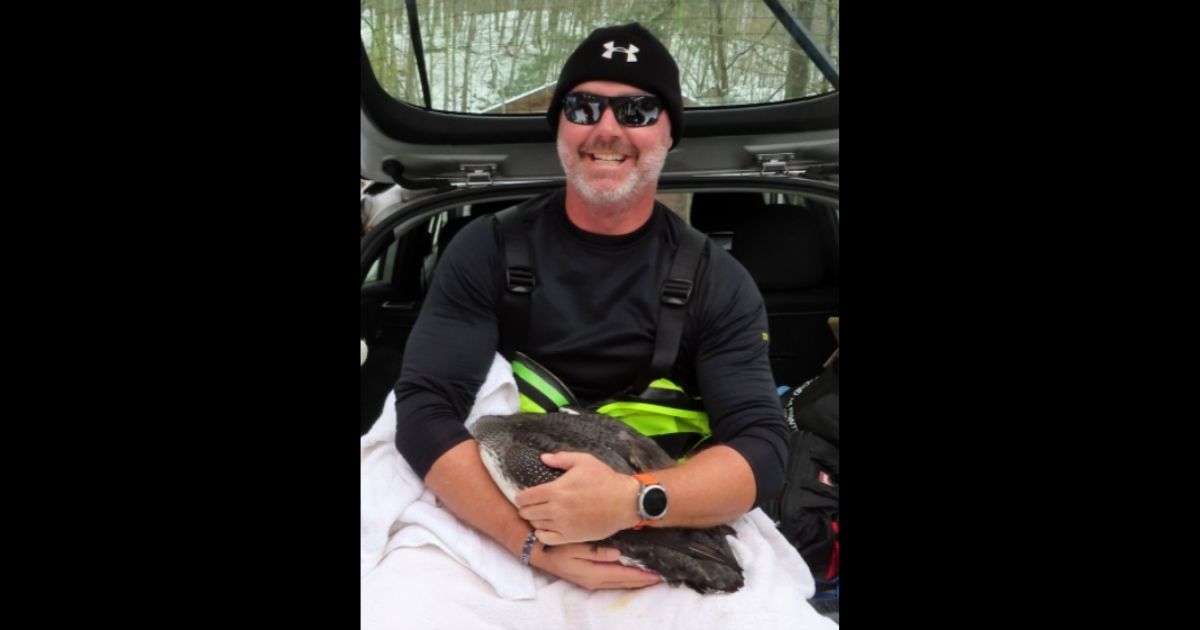Some of the most captivating stories involve dramatic rescues where people risk it all to save another person or a beloved pet in peril.
But rescues of the smaller sort are heartwarming in their own way. This story is about the rescue of a common loon — to the rescuers, it’s just a single bird, but to the loon, the rescue meant everything.
It was on Christmas Day that locals at Star Lake in St. Lawrence, New York, first noticed the common loon out on the lake.
[firefly_embed]
[/firefly_embed]
A loon on a lake is a pretty regular occurrence, but this loon was alone, and it kept diving and swimming in a small area of the lake that was clear of ice.
And the next day it was still there. And the next. And the next.
The problem was that loons need a good amount of open water “runway” — up to 400 meters, according to the Adirondack Center for Loon Conservation’s website — in order to get their heavy bodies into the air.
[firefly_embed]
[/firefly_embed]
The loon on Star Lake was trapped, unable to dive out or fly out. With every day that passed, the ice got closer and the possibility of a predator snatching up the bird increased.
On Dec. 28, the Adirondack Center for Loon Conservation teamed up with Star Lake Fire & Rescue to figure out a way to help the bird.
[firefly_embed]
[/firefly_embed]
“The rescuers wore dry suits to protect them against the chilly water. Winter rescues must be carefully coordinated, since a risk is always present,” the conservation group wrote in its blog.
“Loons can dive under the surface quickly, so it takes both skill and luck to get them in a net. Cody Sears, the ACLC’s Wildlife Technician, went out on the ice with these members of Star Lake Fire & Rescue: Mike Sovay, Chief Rick Rusaw, 1st Asst Chief Cory Daniels, 2nd Asst Chief Logan Hayes, Rescue Capt. Lynne Backus, and Ben Wood.
[firefly_embed]
[/firefly_embed]
“Using a large net, they were able to successfully capture the loon without incident and bring it to shore. After banding the loon, it was successfully released to the open water at Lake Champlain, where it will have ample ‘runway’ to take off, fly, and continue its migration.”
The group shared photos of the rescue on Facebook as part of a fundraiser. People must have been impressed with their work, as followers have donated $630 to their cause so far.
“Thank you!” the group commented on its Facebook post. “We greatly appreciate everyone who donated to support loon rescues in the Adirondacks.”
And that loon in the Adirondacks, no doubt, greatly appreciated the assistance.
This article appeared originally on The Western Journal.
























